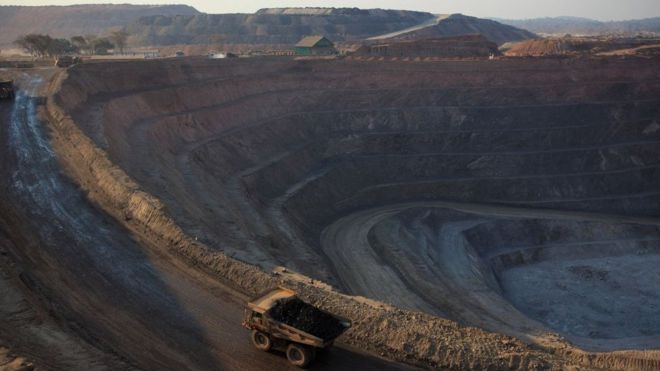Cobalt the New Blue Gold?
July 26, 2018 | Expert Insights

There has been growing interest in cobalt with its demand far surpassing supply as critical elements in batteries powering mobile phones, laptops, and even electric vehicles. Companies in the US are looking at developing local mines in order to reduce dependency on imports.
Background
Cobalt is a shiny, brittle and naturally occurring element, with the chemical symbol Co and atomic number 27. The word ‘cobalt’ dates back to the sixteenth-century German term kobold, meaning goblin, or evil spirit. Kobold was used to describe cobalt ores that, while being smelted for their silver content, gave off poisonous arsenic trioxide.
The earliest application of cobalt was in compounds used for blue dyes for pottery, glass and glazes dating back to 1450 BC in Egypt and Babylonia. In 1735, Swedish chemist Georg Brandt was the first to isolate the element from copper ore, after which the metal remained rare and seldom used until the 20th century. An important development for cobalt came with the creation of aluminum-nickel-cobalt (AlNiCo) magnets in the 1940s.
Cobalt is a very scarce albeit strategic metal resource. It is employed in battery materials particularly lithium-ion batteries, super heat-resistant alloys, tool steels, hard alloys, magnetic materials, pigments and dyes. Due to its high temperature, corrosion resistance and magnetic performance, cobalt is widely used in aerospace, machinery manufacturing, electrical and electronic, chemical, ceramic and other industrial areas.
Analysis
While cobalt mining has not occurred in the United States for decades – beginning with small-scale production in 2014 – a handful of mining companies are now staking claims at sites in Idaho, Montana and Alaska in search of the mineral. The CRU Group in London has projected a rise in its consumption by 8-10% per year, expected to exceed 122,000 tonnes this year from roughly 75,000 tonnes in 2011. Nearly 300 companies are searching for cobalt deposits globally. The price per pound of cobalt has risen above $40 this year, compared to $20 in 2011. Its rising cost has pushed companies to find ways to reduce reliance on the mineral.
The world’s largest deposits of cobalt are found in the Democratic Republic of Congo (DRC), where more than 60% is mined. Other sources include Latin American companies such as Argentina, Bolivia and Chile. China is the world's leading producer of refined cobalt, with imports of $1.2 billion of raw cobalt from DRC in the first nine months of 2017. India, which is the 2nd largest importer at $3.2 million last year, has also scrambled to acquire lithium and cobalt mines abroad, and the government has directed three state-owned mineral companies to team up for the task earlier this year. These include - National Aluminium Company (Nalco), Hindustan Copper (HCL) and Mineral Exploration Corp. Ltd (MECL). While some occurrences of the metal have been reported in Jharkhand, Odisha, Rajasthan, Madhya Pradesh and Nagaland, access to them will aid in building a strategic reserve of key minerals in the future. India’s requirement of lithium is expected to be 350,000 tonnes per year, according to auto industry estimates.
While the demand for cobalt has risen, so have concerns in the US about its reliance on imports. In February this year, the US added cobalt to a list of 35 minerals deemed critical to its economy. Concerns about corruption and child labour at mines in the DRC have also created pressure for buyers to find new sources of supply, closer to home. Apple and Tesla have already announced that they will only buy cobalt from ethical sources in the future.
Counterpoint
The challenges to secure cobalt supplies are significant, because setting up a mine costs hundreds of millions of dollars. The volatile price of cobalt presents another uncertainty.
Cobalt mining also poses a serious risk to the environment and human health. Scientists have recorded alarming radioactivity levels in some regions in DRC. It has resulted in the deaths and injuries of thousands in Congo, including children. Mining waste often pollutes rivers and drinking water.
Assessment
Our assessment is that the status of cobalt has changed drastically over the years. We feel that the demand for its extraction will continue to rise, just like oil, as our energy needs increase. However, we believe that the US might never be able to completely stop importing cobalt since high quality deposits are found in DRC, whose share of global production is likely to grow further. We also feel that the acquisition of cobalt is critical for India’s plan to convert most of its vehicles to electric power in the next decade.








Comments